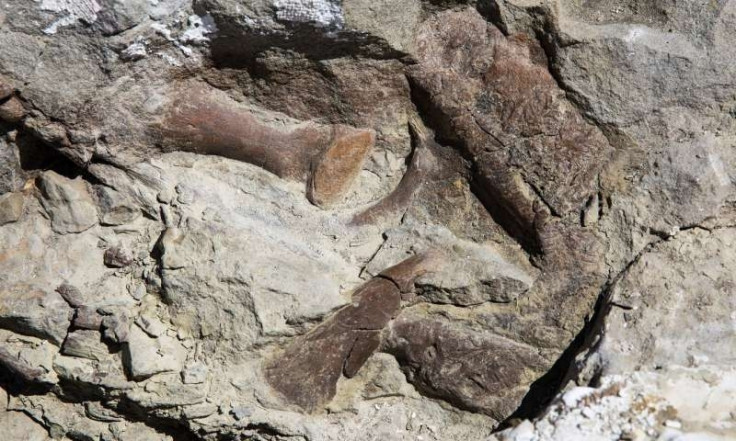New 76-million-year-old tyrannosaur fossil discovered in the US is the most complete ever found
The dinosaur is believed to have been around 17 to 20 feet long and around 12-15 years old.

A new 76-million-year-old fossil of a tyrannosaur, considered to be the most complete fossil ever found, was discovered by archaeologists in the US. The remarkably well-preserved skeleton of the tyrannosaur, which dated back to the Late Cretaceous Period, was found in the Bureau of Land Management's Grand Staircase-Escalante National Monument (GSENM) in southern Utah.
The fossil, which includes a nearly complete skull, was first discovered by GSENM Paleontologist Dr. Alan Titus in July 2015. Researchers suspect that the dinosaur was either buried in a river channel or by a flood, which helped keep the skeletons intact.
"With at least 75 percent of its bones preserved, this is the most complete skeleton of a tyrannosaur ever discovered in the southwestern US," said Dr. Randall Irmis, the curator of paleontology at the Museum and associate professor in the Department of Geology and Geophysics at the University of Utah. "We are eager to get a closer look at this fossil to learn more about the southern tyrannosaur's anatomy, biology, and evolution."
Although several fossils of tyrannosaur have previously been discovered in northern US and Canada, until fairly recently, little was known about their presence in southern America. However, this discovery heralds the significance of the monument as a key place for understanding the history of the southern region.
"The monument is a complex mix of topography—from high desert to badlands—and most of the surface area is exposed rock, making it rich grounds for new discoveries, Dr. Titus said. "And we're not just finding dinosaurs, but also crocodiles, turtles, mammals, amphibians, fish, invertebrates, and plant fossils—remains of a unique ecosystem not found anywhere else in the world."
This new tyrannosaur fossil indicates that the prehistoric creature was around 17 to 20 feet long and was around 12 to 15 years old, with a relatively short head, as compared to the typically long-snouted features of the northern tyrannosaurs.
Researchers said that collecting fossils from such monuments can be highly challenging. In this particular case, according to Dr. Irmis, it took around 2,000 to 3,000 people several hours to painstakingly excavate the site. "Many areas are so remote that often we need to have supplies dropped in and the crew hikes in," said Irmis. The crew had to carry back-backed full of supplies such as water, plaster and other tools, to work at the site for several weeks.
The nearly three-week excavation, which began in early May, saw the crew work tirelessly to prepare the specimen to be airlifted out on 15 October and delivered to the Natural History Museum of Utah, where the fossil will be uncovered, prepared and studied further.
However Irmis estimates that there still remains at least 10,000 hours of work to prepare the specimen for further research. "Without our volunteer team members, we wouldn't be able to accomplish this work. We absolutely rely on them throughout the entire process," said Irmis.
According to Irmis, the new discovery is significant, regardless of whether the fossil is identified as either a new species or an individual of the Teratophoneus curriei species, as the new research will help shed more light on how this creature lived. "We'll look at the size of this new fossil, it's growth pattern, biology, reconstruct muscles to see how the animal moved, how fast could it run, and how it fed with its jaws. The possibilities are endless and exciting," said Irmis.






















